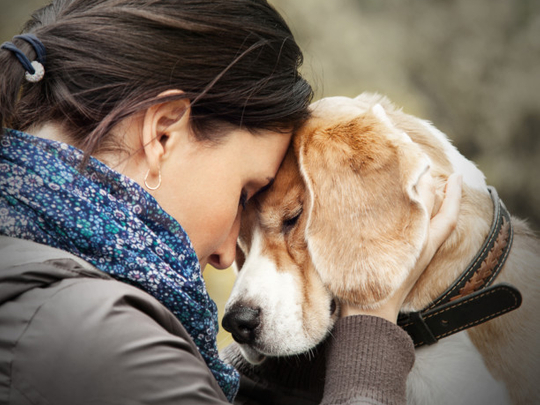
It appears that animals are addicted to cuddles. Even reptiles, hens and fish enjoy some human affection.
From a bear that’s as cuddly as a stuffed animal to a needy koala, and even a toucan, birds and animals alike appear to love human touch in online viral videos. They make clear that they want more cuddles from the human hand that strokes them. They rub themselves and snuggle blissfully with their eyes closed.
But what does science say about such cuddling animals? What do these creatures seek? Pleasure? Food? Social bonds?
Roland Maurer, a behavioural biologist at the University of Geneva, says he has seen a “huge iguana at the Chaux-de-Fonds zoo clearly seeking cuddles” or, at least, head massages. The researcher notes that his bearded dragon — a type of Australian lizard with a thorny neck not known to be social — “closes its eyes and stands still when someone strokes its head”.
“I guess they find some form of pleasure. There must be mechanisms that make these contacts pleasant to them, otherwise they would reject them,” says Maurer. “For social mammals, it’s very simple. Physical contact leads to the production of certain hormones, especially oxytocin, that nurture attachment and that are linked to a form of well-being.”
Since physical contact triggers this chemistry, it also reinforces the need in animals to pursue this contact. This chemical-behavioural glue brings together members of social species. “Without this mechanism that makes contact pleasant, they would tend to stay apart from each other,” says Maurer.
But what’s the use of this pleasure? Why has evolution retained this behaviour?
“Precisely because it favours social life by reducing aggression between members of the same group. Attacking each other isn’t beneficial,” he says. Affection then regulates the pull of competition and cooperation. It acts as a device that allows the coexistence of opposite impulses. As this principle of pleasure is already established in some species, it could activate upon physical contact. “When we pet an iguana, we are actually taking advantage of a communication channel that already exists between iguanas,” says Maurer.
Geneticist Andre Langanev reviewed the video of a lemur and offered an explanation. “The Maki lemur has obviously some kind of rash and it seems to be begging for cuddles when it’s actually scratching itself. Having said that, it may also be using a double strategy: After it was rewarded with the first scratches, it may want more because it actually likes the contact itself.”
These behaviours, which are first linked to survival, become actions that pursue pleasure. “The perception of pleasure is evolution’s mechanism to make us do things. If social life didn’t have any pleasure, there would simply be no social life at all. And that would be a handicap for survival in many situations,” says Maurer.
But we, as humans, may be reading too much into animal behaviour. “There is animal behaviour that for us reflects a human cultural behaviour. For instance, a kiss on the lips. It’s a cultural gesture because it’s completely unknown in many traditional societies. Now of course, people kiss on the lips in many societies all around the world. But earlier, this act seemed puzzling and incongruous in many cultures,” Langanev says.
The behaviour of animals with complex cognitive skills varies according to circumstances. Their behaviour is passed on through learning rather than through genetic code.
“When the environmental conditions change, it can lead to modifications in the social structures and behaviours,” says Langanev.
Unfortunately, says the geneticist, the best existing examples are orangutans, who are now all living in small territories because their forests were cut down. “The fact that they are concentrated in a smaller area than what they were used to leads these primates, who were solitary until then, to form social groups,” Langanev explains.
“In these circumstances, orangutans begin to touch each other, make gestures of solidarity, develop interactions like those we usually observe with anthropomorphic great apes who belong to social species like chimpanzees, bonobos and gorillas.”
— Worldcrunch 2016/New York Times News Service









